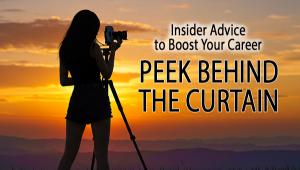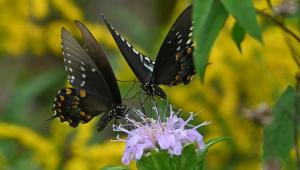Henry Hamilton Bennett; Legendary Landscape Photographer (1843-1908)
Henry Hamilton Bennett's photographs have been collected and displayed in some of the most prestigious museums around the world, including the New York Museum of Modern Art, the Center for Creative Photography, the Smithsonian Institution, and the Library of Congress. His original photographs have found their way into many private collections.
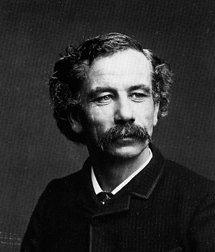 |
|
|
In 1999, Bennett's granddaughter Jean Dyer Reese and her husband Oliver
gifted the 1875 building that housed Bennett's studio, original photographic
equipment, and the entire collection of rare, historic glass negatives and prints
to the State Historical Society of Wisconsin.
Much thought and attention to detail went into the creation of this unique museum
celebrating Bennett's life, making it truly a little "gem"
when it opened to the public in June 2000. Now visitors can "Journey into
the Past," wander past large murals of his photographs, and discover the
natural splendor of the Wisconsin Dells through his eyes. Using the latest technology
in computerized digital stereo imaging, developed for NASA's Mars Pathfinder
mission, and special viewing glasses, with liquid crystal lenses, visitors can
view Bennett's three-dimensional stereo images that mesmerized Americans
more than a century ago.
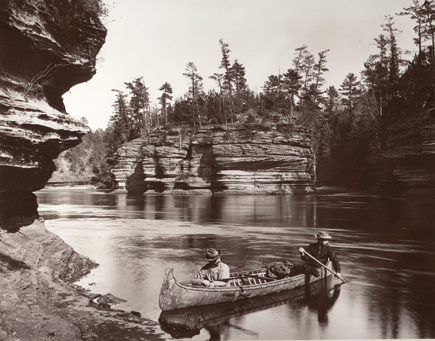 |
|
|
Loaded with nostalgia, Bennett's enormous handcrafted camera and other
memorabilia are everywhere. The now silent, dimly lit darkroom echoes the past,
where he and his family spent countless hours churning out thousands of prints
from glass-plate negatives. Bennett family portraits hang on the walls of the
portrait studio where a huge camera on a stand, draped with a black cloth, stands
sentinel. The once bustling sales room is filled with his photographs and personal
items that tell us about this remarkable man.
A Life In Photography
Henry Hamilton, the oldest of 12 children, was born to George and Harriet Bennett
on January 15, 1843, at his grandparents' farm near Quebec, Canada. The
family returned to their home in Brattleboro, Vermont, where Henry spent his
early boyhood.
In 1857, economic hardship, and the prospect of a brighter future, brought 14-year-old
Henry, his father, and his Uncle George Houghton to Kilbourn City, Wisconsin.
The recently constructed Milwaukee to Minneapolis railroad passed through here,
creating jobs, and Henry became a carpenter. He also had a brief exposure to
photography while assisting Uncle George in his daguerreotype studio. Finding
business unprofitable, George relocated it back to Vermont.
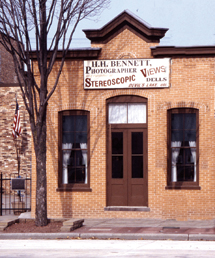 |
|
|
The Civil War broke in April 1861. Believing in the cause and aware that his
great-grandfather Aaron Bennett was killed during the bloody battle at Valley
Forge (while serving as aide to General George Washington), he decided to pursue
a military career. Henry, now 18, enlisted on September 8, 1861.
Fate intervened, when on April 17, 1864, his rifle accidentally discharged,
permanently disabling his right hand. Returning home to Kilbourn City, and unable
to resume carpentry, Henry was compelled to seek a new livelihood. He bought
Leroy Gates' photo business in 1865, and embarked on a career that spanned
more than 40 years. He found a new calling: Photography!
The Tourist Trade
Using Gates' old tintype cameras, Henry set up his photo tent down by
the steamboat landing, ready to photograph visitors prior to their boat trips
along the Wisconsin River to see the strange rock formations. While they were
gone, he quickly developed the tinplate sheets, coating them with a wet collodion
solution before transferring the positive image onto coated metal sheets. Returning
a few hours later, he had prints ready for the delighted tourists to take home
as souvenirs.
In the late 1860s, photography, still in its infancy, was not a lucrative vocation
and Henry faced hard times. Now married, he and his wife Frances (Frankie) had
two young children, daughter Hattie and a son Ashley Clayton. Unable to make
ends meet, and very depressed, Henry seriously considered shutting the business
and asked Uncle George in Vermont for a job. His uncle replied, saying that
he had sold his portrait studio, and advised his nephew to "...give
up the business and never touch it again..."
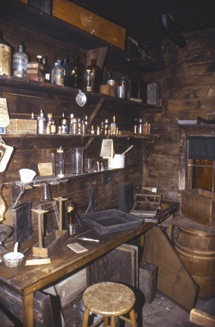 |
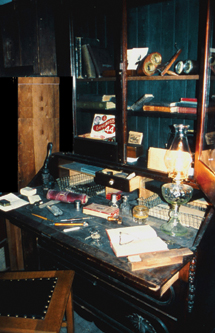 |
|
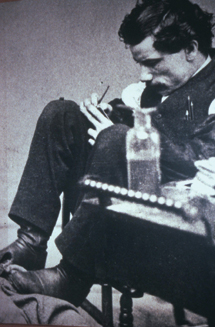 |
||
|
||
Recording The Land
Fortunately Henry opted not to follow his uncle's advice. Instead, to
supplement their income, he leased Gates' old building for $12.50 a month,
set up a small portrait studio in town, and taught Frankie to handle this part
of the business, including developing and printing the wet-plate negatives in
the darkroom. This freed him up to be able to concentrate on the growing demand
for landscape photography. In addition to the tourists, he began photographing
the local landscape, and toiled countless hours, tirelessly trudging up and
down the narrow gorges and ravines along the Wisconsin River, giving them colorful
names, still in use today, like Witches Gulch, Coldwater Canyon, and Fat Man's
Misery. He fell in love with the wild scenery around Kilbourn City, which was
renamed "The Wisconsin Dells" in 1931.

